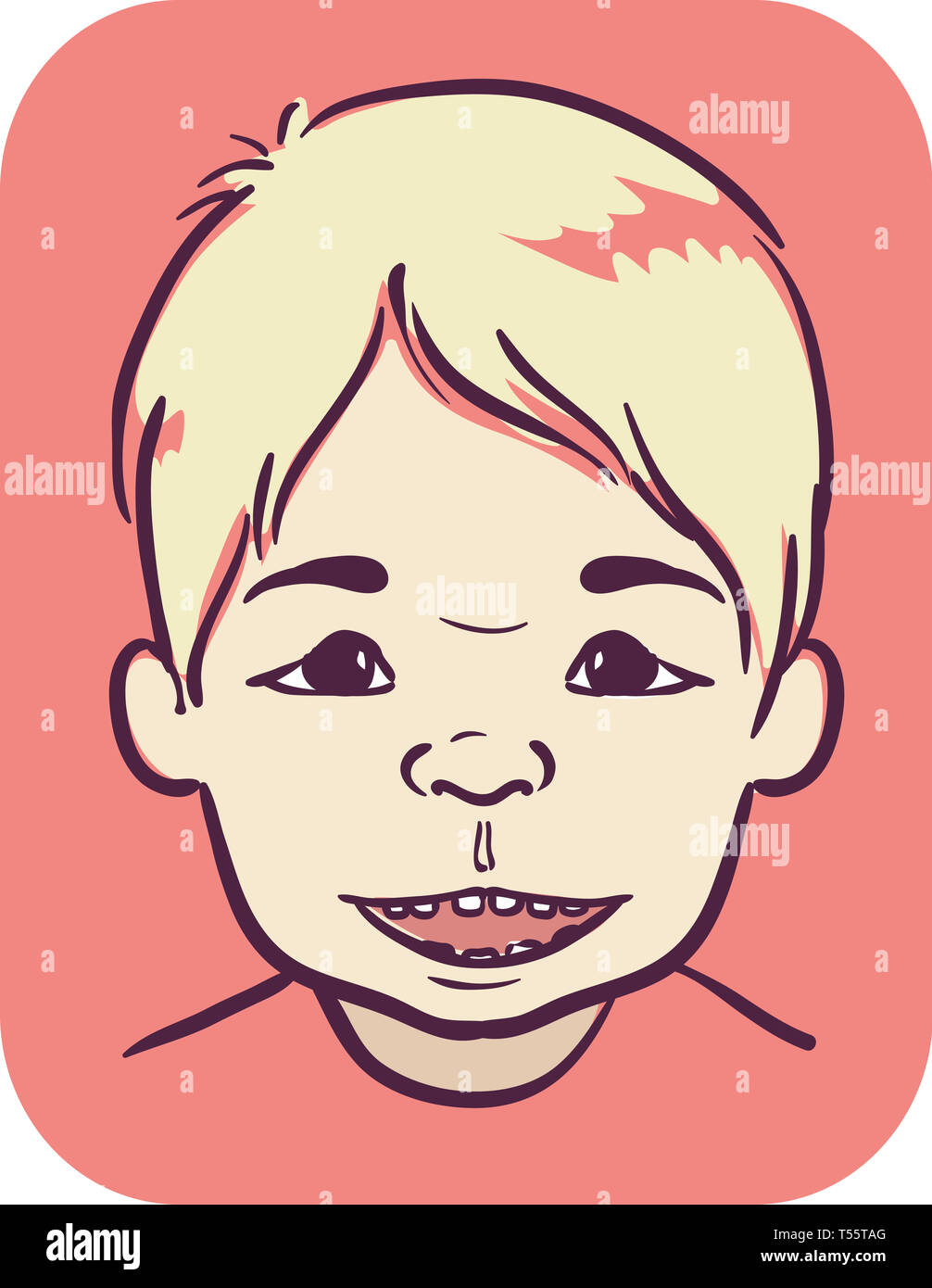Das Angelman-Syndrom (engl.: Happy-Puppet-Syndrome) ist eine seltene, genetisch bedingte Erkrankung. Sie äußert sich unter anderem durch geistige und körperliche Einschränkungen, Entwicklungsstörungen (vor allem der Sprache) und Hyperaktivität. Auffällig ist das puppenhafte Aussehen und der freudige Gesichtsausdruck der Betroffenen.
Das Angelman-Syndrom ist die Folge einer seltenen genetischen Veränderung auf Chromosom 15 (Mikrodeletion auf dem mütterlichen Chromosom oder uniparentale Disomie 15q11-13). Sie geht oft einher mit Entwicklungsverzögerungen, kognitiver Behinderung , überdurchschnittlicher Fröhlichkeit und einer stark reduzierten Lautsprachentwicklung .
Learn about the genetic disorder that causes developmental delay, intellectual disability, seizures, and happy demeanor. Find out how to participate in clinical trials and access resources for AS.
Early signs of Angelman syndrome typically include balance and motor problems associated with ataxia (the inability to coordinate muscle movements). As a result, movements are often jerky and accompanied by fine tremors in the arms and legs.
Angelman syndrome is a complex genetic disorder that causes developmental and neurological problems, such as severe speech impairment and trouble walking and balancing ().Affects about 1 in 10,000 people
Das Angelman-Syndrom ist die Folge einer seltenen genetischen Veränderung auf Chromosom 15 (Mikrodeletion auf dem mütterlichen Chromosom oder uniparentale Disomie 15q11-13). Sie geht oft einher mit Entwicklungsverzögerungen, kognitiver Behinderung , überdurchschnittlicher Fröhlichkeit und einer stark reduzierten Lautsprachentwicklung . Learn about the genetic disorder that causes developmental delay, intellectual disability, seizures, and happy demeanor. Find out how to participate in clinical trials and access resources for AS. Early signs of Angelman syndrome typically include balance and motor problems associated with ataxia (the inability to coordinate muscle movements).
As a result, movements are often jerky and accompanied by fine tremors in the arms and legs. Angelman syndrome is a complex genetic disorder that causes developmental and neurological problems, such as severe speech impairment and trouble walking and balancing ().Affects about 1 in 10,000 people
Angelman syndrome is a genetic disorder that primarily affects the nervous system. Characteristic features of this condition include developmental delay, intellectual disability, severe speech impairment, problems with movement and balance (ataxia), epilepsy, and a small head size.
Angelman syndrome (AS) is a rare neurogenetic disorder that affects about one in 15,000 people, or approximately 500,000 individuals worldwide.
Treatment. There's no cure for Angelman syndrome. Research is looking at targeting certain genes for treatment. Current treatment focuses on managing symptoms and addressing the developmental delays in children with Angelman syndrome.
Das Angelman-Syndrom tritt sowohl beim männlichen als auch beim weiblichen Geschlecht auf. Die Häufigkeit beträgt zirka 1:15.Die Historie zum Angelman-Syndrom Dr. Harry Angelman, englischer Kinderarzt mit dem Spezialgebiet Neurologie, beschrieb das Syndrom erstmals in einem 1965 veröffentlichten Artikel. Er hatte drei Kinder mit
Das Syndrom - Angelman e.V.
Angelman syndrome is a genetic disorder that primarily affects the nervous system. Characteristic features of this condition include developmental delay, intellectual disability, severe speech impairment, problems with movement and balance (ataxia), epilepsy, and a small head size. Angelman syndrome (AS) is a rare neurogenetic disorder that affects about one in 15,000 people, or approximately 500,000 individuals worldwide. Treatment. There's no cure for Angelman syndrome.
Research is looking at targeting certain genes for treatment. Current treatment focuses on managing symptoms and addressing the developmental delays in children with Angelman syndrome. Das Angelman-Syndrom tritt sowohl beim männlichen als auch beim weiblichen Geschlecht auf. Die Häufigkeit beträgt zirka 1:15.Die Historie zum Angelman-Syndrom Dr. Harry Angelman, englischer Kinderarzt mit dem Spezialgebiet Neurologie, beschrieb das Syndrom erstmals in einem 1965 veröffentlichten Artikel.
Er hatte drei Kinder mit
In 1965 Harry Angelman, a British pediatrician, described the "Puppet Children," later being renamed Angelman syndrome (AS). Angelman described three children who had similar symptoms of learning disability, minimal or absent speech, ataxic and jerky movements, and a happy social disposition.[1]
Angelman syndrome (AS) is characterized by severe developmental delay or intellectual disability, severe speech impairment, gait ataxia and/or tremulousness of the limbs, and unique behavior with an apparent happy demeanor that includes frequent laughing, smiling, and excitability. Microcephaly and seizures are also common. Developmental delays are first noted at around age six months; however
Angelman Syndrome is a rare genetic disorder affects the nervous system. People with the condition may have developmental delays, learning disabilities, speech impairment and problems with balance and coordination.
The Mission. The mission of the Angelman Syndrome Foundation is to advance the awareness and treatment of Angelman syndrome through education and information, research, and support for individuals with Angelman syndrome, their families and other concerned parties.
Angelman Syndrome Foundation - With you for the journey
In 1965 Harry Angelman, a British pediatrician, described the "Puppet Children," later being renamed Angelman syndrome (AS). Angelman described three children who had similar symptoms of learning disability, minimal or absent speech, ataxic and jerky movements, and a happy social disposition.[1] Angelman syndrome (AS) is characterized by severe developmental delay or intellectual disability, severe speech impairment, gait ataxia and/or tremulousness of the limbs, and unique behavior with an apparent happy demeanor that includes frequent laughing, smiling, and excitability. Microcephaly and seizures are also common. Developmental delays are first noted at around age six months; however Angelman Syndrome is a rare genetic disorder affects the nervous system. People with the condition may have developmental delays, learning disabilities, speech impairment and problems with balance and coordination.
The Mission. The mission of the Angelman Syndrome Foundation is to advance the awareness and treatment of Angelman syndrome through education and information, research, and support for individuals with Angelman syndrome, their families and other concerned parties.
Angelman syndrome; Other names: Angelman's syndrome [1] [2]: A five-year-old girl with Angelman syndrome. Features shown include telecanthus, bilateral epicanthic folds, small head, wide mouth, and an apparently happy demeanor; hands with tapered fingers, abnormal creases and broad thumbs.: Pronunciation / ˈ æ ŋ ɡ ə l m ə n /, [3] [1] / ˈ æ n dʒ əl m ə n /, [2] [4] or / ˈ eɪ n dʒ
Angelman syndrome is a genetic disorder causing delays in development and neurological issues or symptoms. These may include problems with speech, balance and walking. In some cases, Angelman syndrome can be associated with seizures.
Saturday, May 17, 2025* *in most locations Introducing Angelman Strong! For over 25 years, the ASF Walks united and empowered the Angelman syndrome community, building an incredible network of support.
Angelman syndrome is a rare genetic disorder that affects brain development and causes delayed speech, movement, and learning problems. Learn about the symptoms, causes, diagnosis, and treatment options from Mayo Clinic experts.
Angelman syndrome - Symptoms and causes - Mayo Clinic
Angelman syndrome; Other names: Angelman's syndrome [1] [2]: A five-year-old girl with Angelman syndrome. Features shown include telecanthus, bilateral epicanthic folds, small head, wide mouth, and an apparently happy demeanor; hands with tapered fingers, abnormal creases and broad thumbs.: Pronunciation / ˈ æ ŋ ɡ ə l m ə n /, [3] [1] / ˈ æ n dʒ əl m ə n /, [2] [4] or / ˈ eɪ n dʒ Angelman syndrome is a genetic disorder causing delays in development and neurological issues or symptoms. These may include problems with speech, balance and walking. In some cases, Angelman syndrome can be associated with seizures. Saturday, May 17, 2025* *in most locations Introducing Angelman Strong!
For over 25 years, the ASF Walks united and empowered the Angelman syndrome community, building an incredible network of support. Angelman syndrome is a rare genetic disorder that affects brain development and causes delayed speech, movement, and learning problems. Learn about the symptoms, causes, diagnosis, and treatment options from Mayo Clinic experts.
Angelman syndrome is a rare condition that affects your child's speech, development and movement. Seizures are common. Children are usually very expressive — they may smile and laugh often or get excited easily.
NORD (National Organization for Rare Disorders) explains: "Angelman syndrome is a rare genetic and neurological disorder characterized by severe developmental delay and learning disabilities
Learn about the common symptoms of Angelman syndrome, such as developmental delays, seizures, sleep problems and lack of speech. Find out how a problem with the UBE3A gene on chromosome 15 causes this condition.
Angelman syndrome (AS) is a rare neurogenetic disorder that affects about one in 15,000 people, or approximately 500,000 individuals worldwide.
What Is Angelman Syndrome? - FAST
Angelman syndrome is a rare condition that affects your child's speech, development and movement. Seizures are common. Children are usually very expressive — they may smile and laugh often or get excited easily. NORD (National Organization for Rare Disorders) explains: "Angelman syndrome is a rare genetic and neurological disorder characterized by severe developmental delay and learning disabilities Learn about the common symptoms of Angelman syndrome, such as developmental delays, seizures, sleep problems and lack of speech. Find out how a problem with the UBE3A gene on chromosome 15 causes this condition.
Angelman syndrome (AS) is a rare neurogenetic disorder that affects about one in 15,000 people, or approximately 500,000 individuals worldwide.
May ASF-funded research, published in the Journal of Neurodevelopmental Disorders, identified that delta—a frequency of brain rhythms identifiable by EEG scans—can serve as a reliable biomarker for pre-clinical and clinical trials in Angelman syndrome, one of the first biomarkers to be established in AS research Biomarkers play a critical role in determining whether a potential
By participating in research studies, you are contributing to the knowledge of how Angelman syndrome is treated now and in the future. Participating in research gives you a chance to step up and take action.
Symptoms of Angelman syndrome. Some symptoms can vary and be more severe than others, but in most children diagnosed with AS, the following are present:
Angelman syndrome (AS) is a genetic disorder characterised by severe mental retardation, subtle dysmorphic facial features, a characteristic behavioural phenotype, epileptic seizures and EEG abnormalities. AS can be caused by various genetic mechanisms involving the chromosome 15q11-13 region. Neuro …
Angelman syndrome: is there a characteristic EEG? - PubMed
May ASF-funded research, published in the Journal of Neurodevelopmental Disorders, identified that delta—a frequency of brain rhythms identifiable by EEG scans—can serve as a reliable biomarker for pre-clinical and clinical trials in Angelman syndrome, one of the first biomarkers to be established in AS research Biomarkers play a critical role in determining whether a potential By participating in research studies, you are contributing to the knowledge of how Angelman syndrome is treated now and in the future. Participating in research gives you a chance to step up and take action. Symptoms of Angelman syndrome. Some symptoms can vary and be more severe than others, but in most children diagnosed with AS, the following are present: Angelman syndrome (AS) is a genetic disorder characterised by severe mental retardation, subtle dysmorphic facial features, a characteristic behavioural phenotype, epileptic seizures and EEG abnormalities. AS can be caused by various genetic mechanisms involving the chromosome 15q11-13 region.
Neuro …




